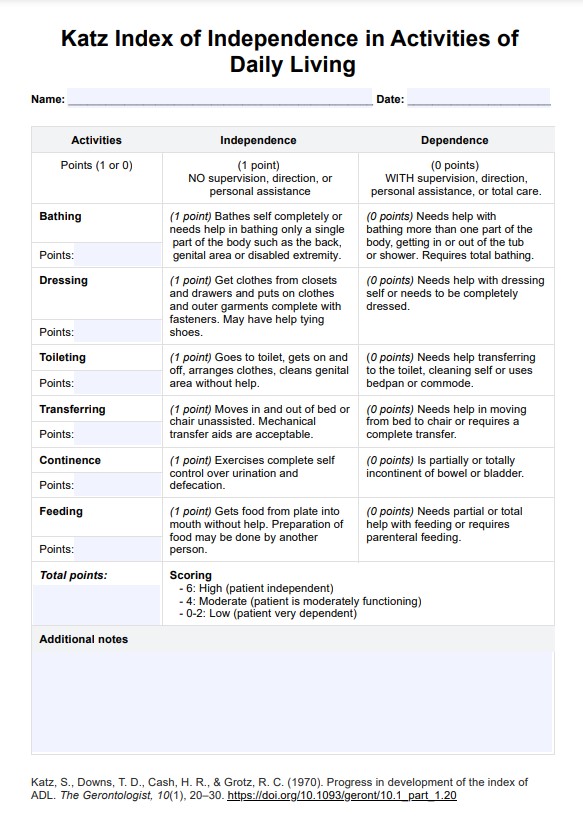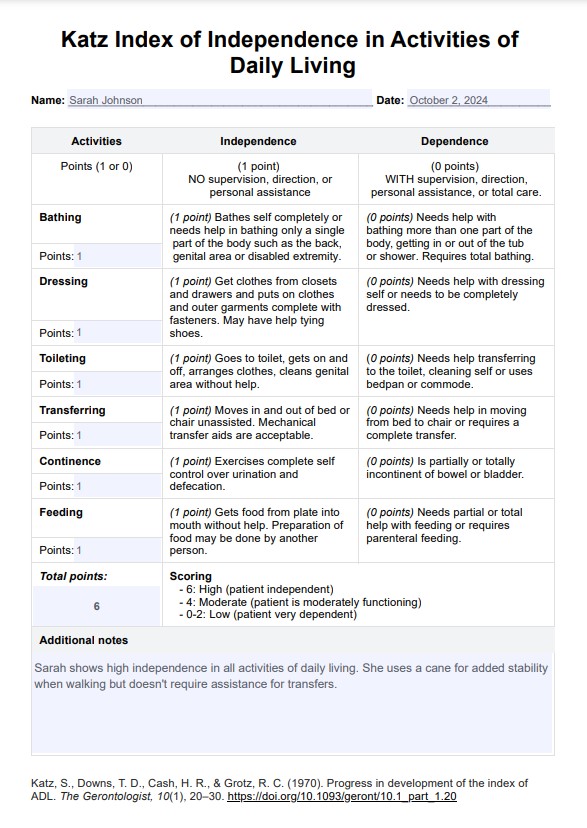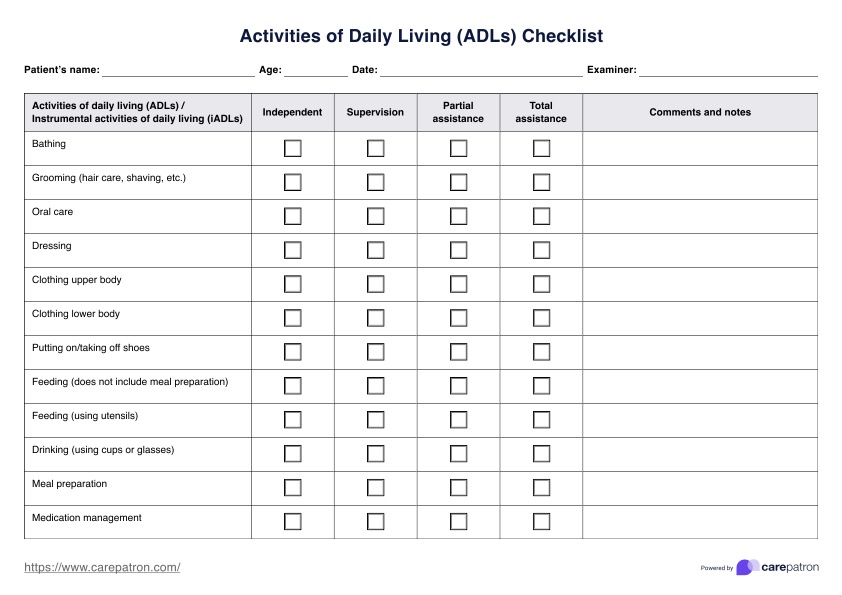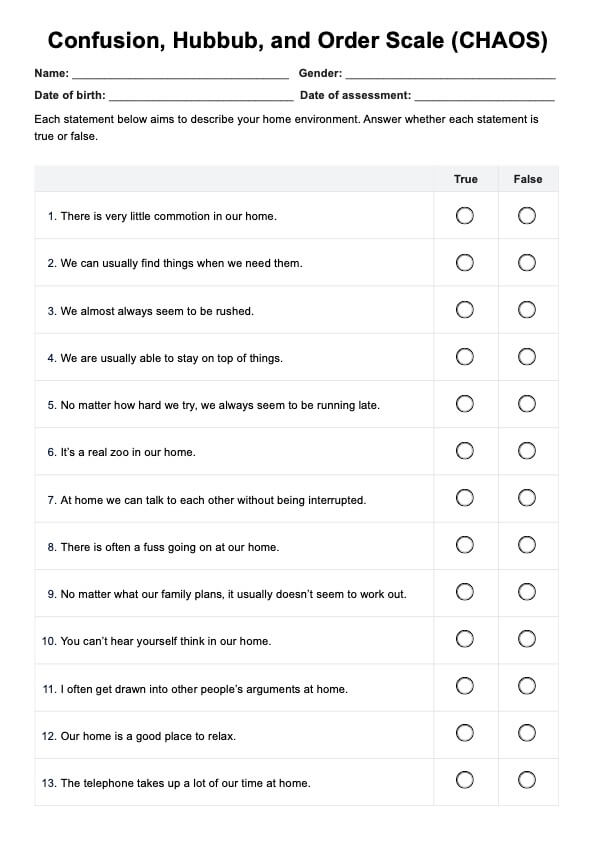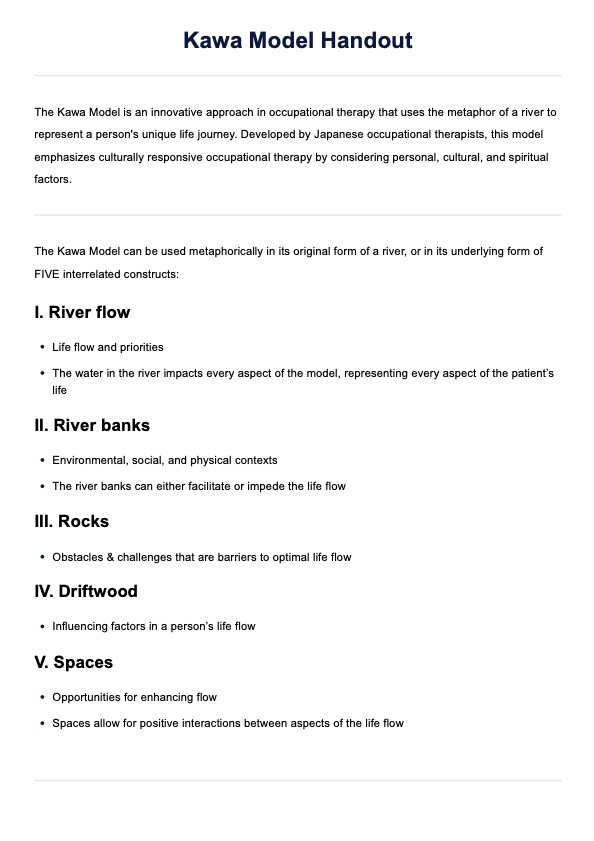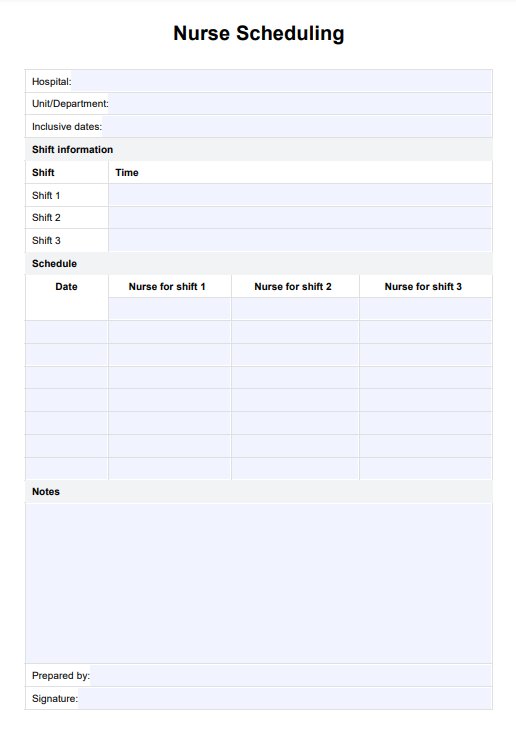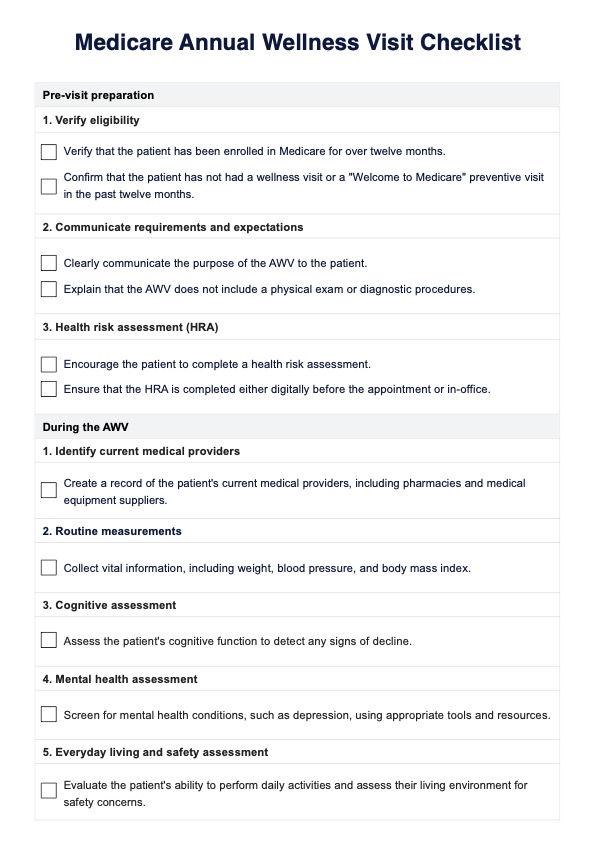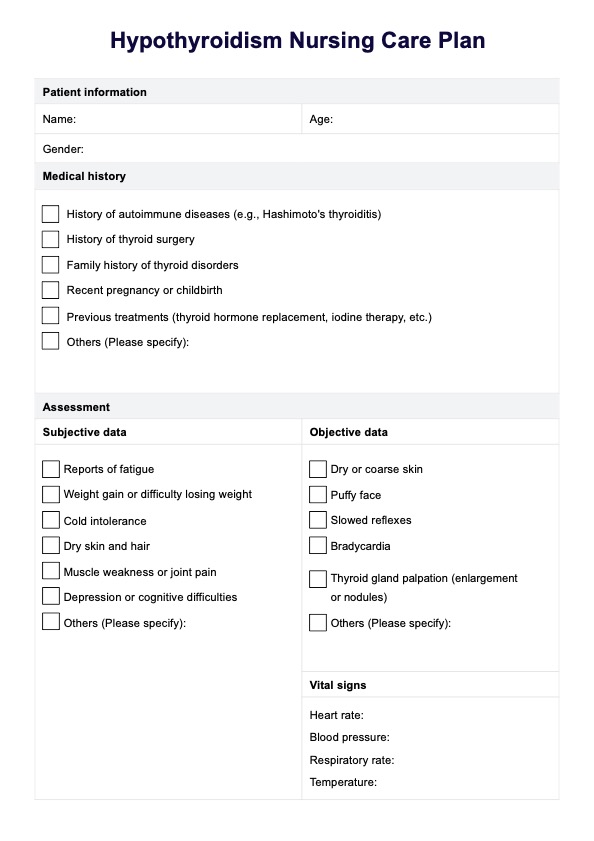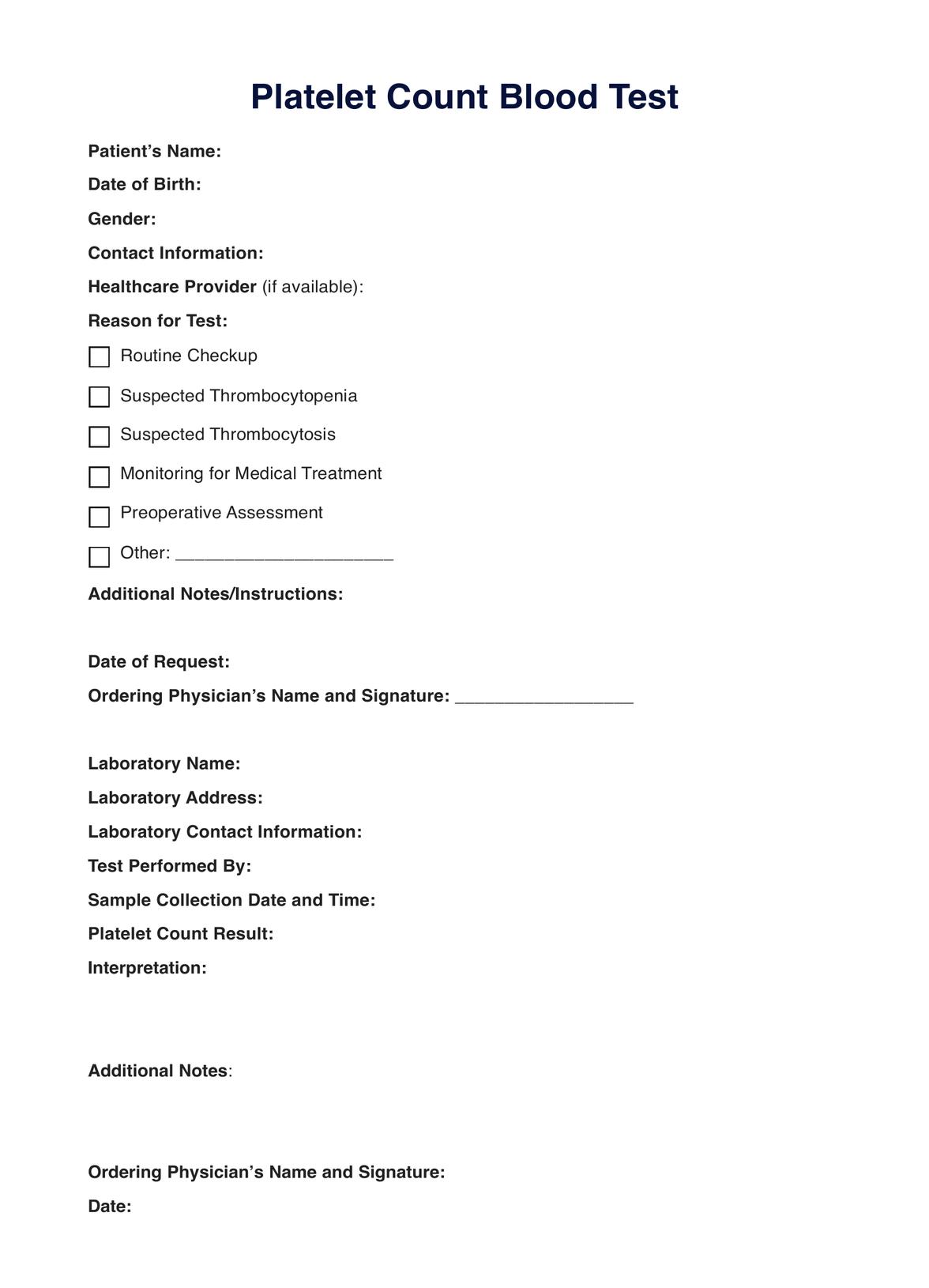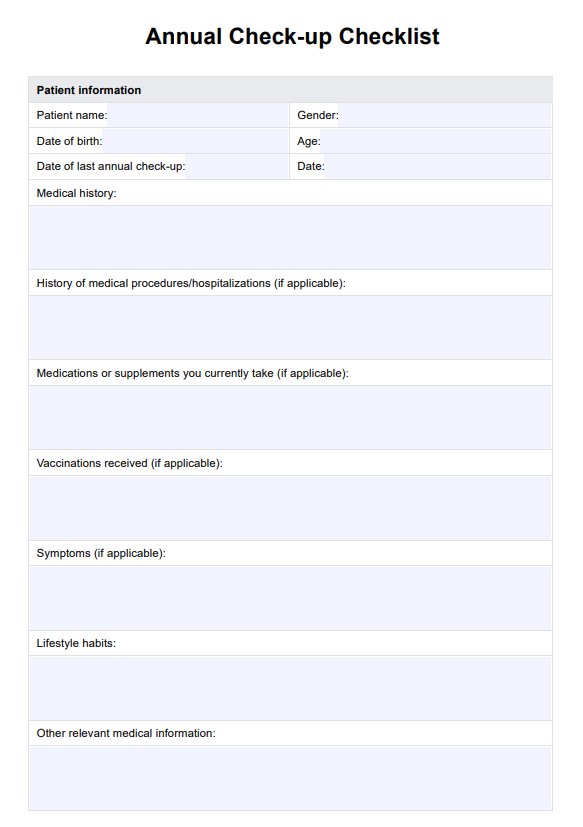Katz Index of Independence in Activities of Daily Living
Learn about the Katz Index to measure an individual's ability to perform everyday life tasks independently.


What is the Katz Index of Independence in Activities of Daily Living?
Living independently is an important milestone that many people strive to reach. But for those who are elderly, disabled, or have chronic illnesses, it can be challenging to determine whether they can achieve such a milestone.
This tool is used to assess functional status among individuals when undertaking activities of daily living (ADLs). ADLs are daily activities necessary for self-care, such as bathing, dressing, eating, and walking. Healthcare professionals use this index to evaluate an individual's functional abilities to perform and manage personal hygiene-related and other living activities. This also helps in making appropriate recommendations for their care.
This index measures six basic activities: bathing, dressing, toileting, transferring (moving from one place to another), continence (maintaining control of bladder and bowel movements), and feeding. Each activity is scored from 0 (independent) to 1 (dependent).
It is important to note that the Katz Index is only one of many options for testing an individual's independence or for a comprehensive geriatric assessment for older adults. Other assessment tools that healthcare professionals can use are the Barthel Index and the Modified Barthel Index.
Factors such as medical history and biological and psychosocial function should also be considered when evaluating a person's ability to do ADLs and live independently.
Katz Index of Independence in Activities of Daily Living Template
Katz Index of Independence in Activities of Daily Living Example
How does the Katz Index work?
Using this free Katz ADL Index template is quick and easy. Follow these steps to get started:
Step 1: Access the template
Download the Katz Index of Independence in Activities of Daily Living using the link on this page. You can also get a copy from the Carepatron app or the resources library.
Step 2: Complete the assessment
Once you have the template, review each of the six sections with your patient. Ask them questions to gauge their ability to perform each activity.
Step 3: Record the results
Write down your patient's responses on the template. Each response should be scored 0 (independent) or 1 (dependent). Once you've completed the assessment, tally up the total score.
Step 4: Secure the form
This Katz Index template contains highly confidential patient information. Make sure to store it in a safe location or within HIPAA-compliant software.
Katz Index scoring and interpretation
The Katz Index measures functional independence in six activities: continence (ability to control bladder and bowel functions), bathing, dressing, toileting, transferring (from one surface to another), and feeding. Each activity is graded on a scale of 0 (dependence) to 1 (independence). Independence is defined as performing the activity without supervision, direction, or active personal assistance.
A score of 6 indicates complete independence, while a 4 means the patient is moderately functioning. A score from 0 to 2 indicates that the patient is fully dependent.
It's important to note that while these cut-off points are commonly used, they should be interpreted in conjunction with clinical judgment and other assessment tools for a comprehensive evaluation of an individual's functional status. The Katz Index is just one standardized measure used to determine independence. Healthcare providers should also consider your patient's medical history and cognitive status when making an assessment.
When to use this Katz scale?
The Katz Index is a valuable tool for healthcare professionals assessing their patient's ability to perform daily activities. It is particularly helpful when:
Evaluating a patient's eligibility for home care services
You can use the Katz Index to determine whether a patient can live independently or need ADL assistance. It helps you determine when and how to provide them with the care they need to remain safe and healthy.
Monitoring changes in a patient's condition over time
Tracking a patient's progress over time can help you assess their health and develop an appropriate treatment plan. The Katz Index can help you measure changes in a patient's condition and promptly address possible functional decline.
Creating an individualized care plan
The Katz Index is an effective tool for designing customized care plans for your patient. It can help identify areas where they need assistance and develop an individualized plan to meet those needs.
Determining if a patient requires additional assistance
You can use this assessment to determine if patients need additional assistance with their daily activities. This can give them the support they need to be comfortable and independent.
Benefits of free Katz Index template
This free Katz Index template offers many benefits for healthcare professionals and patients. Some of the advantages are:
It's easy to fill out
The template is simple, with easy-to-understand items. It also contains self-explanatory instructions, so you can quickly fill it out in minutes.
It's highly accurate
The Katz Index is an evidence-based tool that provides accurate and reliable results. You can be confident that its results reflect your patient's actual level of independence.
It's fully digital
The Katz Index template is accessible in a digital format. This makes it easy to store and share with other healthcare professionals.
It helps provide patients with personalized care
This free template helps you identify areas where your patient needs assistance. It also allows you to develop individualized care plans that meet their needs.
It gives patients a sense of autonomy
This assessment tool helps patients feel more empowered and in control of their own care. It can help them regain independence, a vital part of their daily lives.
Reference
Katz, S. (1983). Assessing self-maintenance: Activities of daily living, mobility, and instrumental activities of daily living. JAGS, 31(12), 721-726. https://doi.org/10.1111/j.1532-5415.1983.tb03391.x
Commonly asked questions
The Katz Index is scored on a 0-1 scale. A score of 0 indicates total dependence, while a score of 1 indicates independence. Each activity is assessed and assigned a score, with higher scores indicating greater independence. The total score for the Katz Index can range from 0-6.
The Katz Index is interpreted based on the total score. A score of 0 indicates total dependence in ADLs, while a score of 6 indicates complete independence. Scores in between indicate varying degrees of either dependence or independence.
The Katz Index of Independence in Activities of Daily Living measures a patient's ability to perform six different activities independently. These activities are bathing, dressing, toileting, transferring, continence, and feeding.


